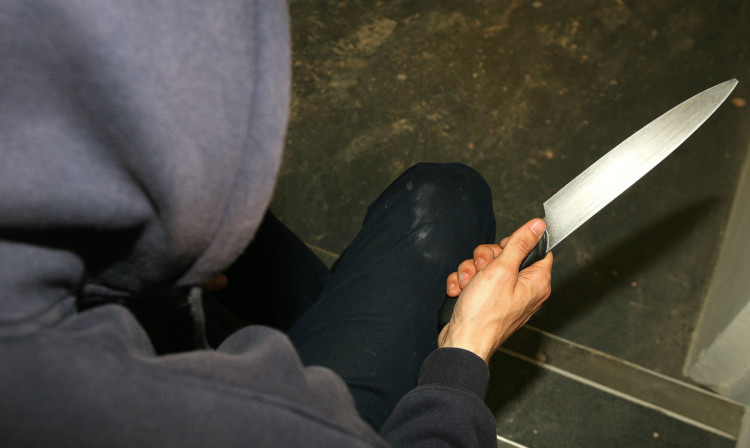
Scotland has proportionately more knife killings than almost everywhere else in the world.
A damning new United Nations report has found the three out of five murders caused by blades in this country puts it second in a shameful global league.
Only the tiny Caribbean island of Grenada has a higher annual percentage of murders by “sharp objects” than Scotland.
Over the past five years “intentional” murders have been falling. But the proportion carried out by knives remains stubbornly high accounting for more than half every year since 2008.
This is a far higher percentage than every other country in Europe, according to the UN global study on homicide, which looked at 98 countries around the world.
This includes England and Wales and also Northern Ireland where fewer than two in five murders are caused by sharp objects.
The report also tells how the most common age at which people in Scotland begin to carry knives is just 13 or 14. It warns that this appalling scandal is having “a strong influence” on youngsters carrying knives throughout their teens.
Last night anti-knife campaigners accused the Scottish Government of failing to properly tackle the “booze and blades” culture in Scotland.
John Muir, 75, whose son Damian was just 34 when he was stabbed to death in July 2007 in Greenock by Barry Gavin who had twice avoided jail despite being caught with a knife, said: “Unfortunately these figures aren’t surprising.
“What we hear on the ground is different to what the Scottish Government tells us.
“Only last month I heard an example of a mum whose son had a knife pulled on him in school in Greenock. Rightly the mum was upset and asked the school and police to investigate.
“But she was ignored and the matter was brushed aside by the school and police. I suspect the police that did come did not even record it.
“Shameful violent knife crime has blighted the Scottish nation for decades. We need tougher sentencing.”
Alan Mclean, whose 27-year-old son Barry died in May 2011 after being stabbed during a fight, said: “The bottom line is knife crime will not be tackled until the Scottish Government get tough. There are not enough deterrents.
“I would like to see an increase on the tariffs of people carrying knifes and those who use them. England is getting tough with harsher sentences. Scotland should follow suit.”
The UN report looked at the percentage distribution of intentional murders by weapon over the past eight years.
The proportion carried out by knives in Scotland rose from 37% in 2005 to 58% in 2011. Only Grenada was higher at 71% in the latest year and 55% in 2005.
In England and Wales the proportion remained around the 35-40% mark while in Northern Ireland it was between 24% and 35%.
Scottish Conservative chief whip John Lamont said: “The SNP said it was going to get tough on knife crime, and clearly from this report that hasn’t happened.
“There is no point telling courts on the one had that the maximum sentence for carrying a knife is five years, then asking them not to send people to jail on the other.
“A no nonsense approach on knives would send the message that it won’t be tolerated, and that would serve as a deterrent to those considering carrying a blade.”
A Scottish Government spokesperson said:“The UN report is rather incomplete, in that it does not use the most up-to-date data and they do not report the breakdown for homicides for all countries.
“The number of homicide victims has fallen by almost 50% since 2006-07 and is now at the lowest level for 37 years. This represents the fewest ever on record and the lowest in a generation.
“We know that the main method of killing is still the same, the use of sharp instruments, however gun crime is at lowest level since records began.
“As part of building safer communities, we are continuing to work with partners at a national and local level to reduce violence and tackle knife crime in Scotland.
“Our priority is to prevent all forms of abuse and violence, to change the culture in which some people think that carrying a knife is acceptable.”

Enjoy the convenience of having The Sunday Post delivered as a digital ePaper straight to your smartphone, tablet or computer.
Subscribe for only £5.49 a month and enjoy all the benefits of the printed paper as a digital replica.
Subscribe